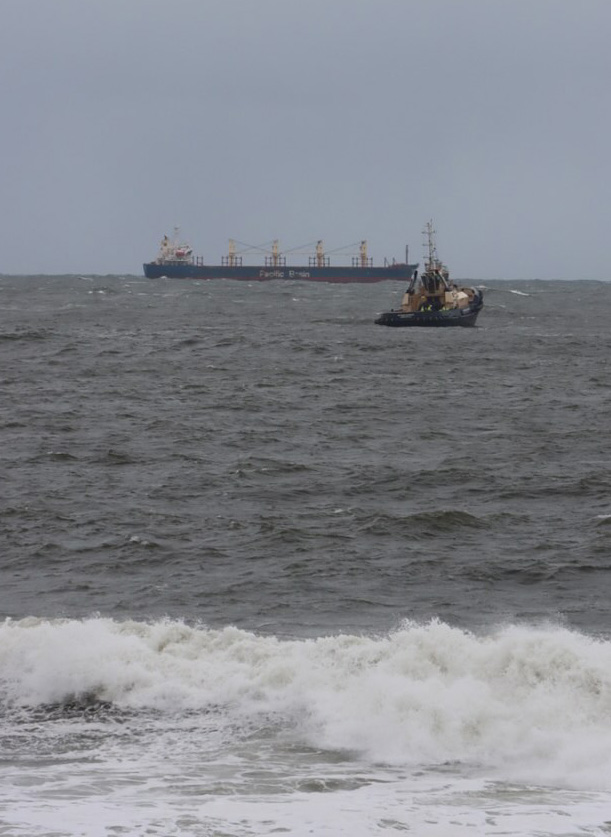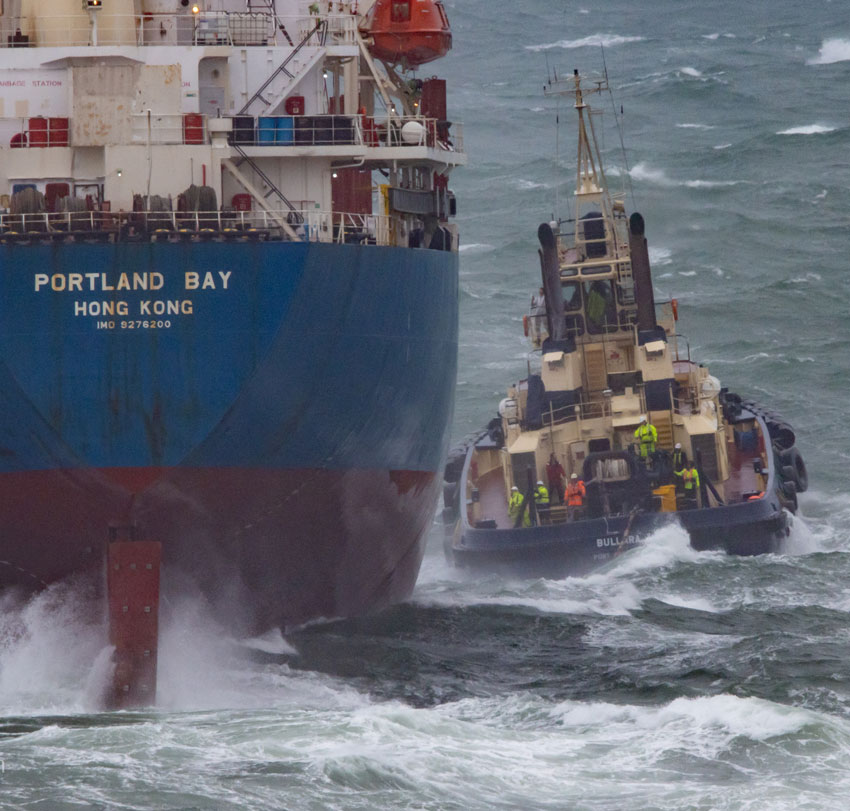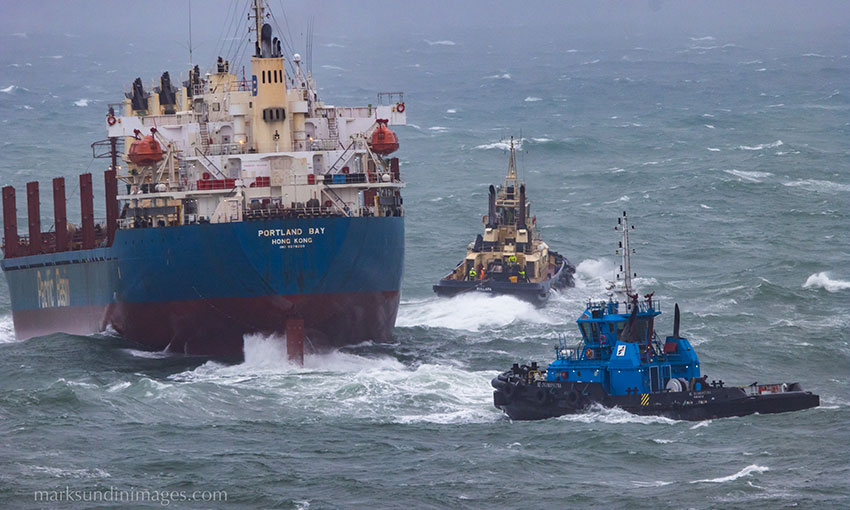EFFORTS to tow the stricken bulk carrier Portland Bay to deeper water stalled late in the evening on Monday 4 July when tow lines snapped in “extreme” weather conditions. The vessel was then moved to a position off Cronulla, where it remains anchored as of the evening of Tuesday 5 July.

Over the course of Tuesday, the emergency response team, led by the Port Authority of NSW, was preparing for “slow and steady progress in challenging conditions,” PANSW said in a statement.
Port Authority CEO Philip Holliday said the vessel remains at anchor with both anchors down in a position 1.2 nautical miles off Botany Bay near Cronulla Beach.
“The crew is taking every opportunity while in this situation to undertake repairs to their engines,” Mr Holliday said.
“Two tugs remain on site with the vessel today and I’m pleased that in the currently stable environment all crew have had the opportunity to refresh and get some rest after working in these extremely difficult and hazardous conditions throughout yesterday and overnight.”
Mr Holliday said the third emergency tow vessel, Glenrock, has also arrived onsite after punching through southerly headwinds and over 10-metre seas during the passage from Newcastle.
“The specialised vessel with additional deep sea response capability Glenrock will be key in the next phase when moving the Portland Bay to safety,” he said.
“The priority of this operation remains the safety of all involved and protecting the NSW coastline. All agencies involved are being extremely vigilant in planning every step we take to this end.
“The plan today is to keep the vessel stable in the current location with tugs ready and available so we can affect a tow if needed, but otherwise keep her where she is as we await an improved weather window to bring her into Port Botany.”
Later in the day on Tuesday at a press conference, Mr Holliday said the plan was to wait for the weather to ease and start bringing the vessel into Port Botany at around daylight on Wednesday morning, weather permitting.
“We’ve received direction from AMSA to bring the vessel into Port Botany, we’ll do that tomorrow, and we’re in discussions with various berth operators [about where the ship will berth],” Mr Holliday said.
Mr Holliday said the vessel would be assessed when it comes alongside and the repairs would commence.

“Originally, we anticipated the repairs would only take four to six hours, but they’ve had a few setbacks along the way,” Mr Holliday said.
He said the original problem was with the turbo blower, which helps to cool the engine.
“Typically, you would stop running the engine with that problem, but they had to keep using the engine to keep themselves safe until help arrived,” Mr Holliday said.
“That meant that they caused more damage to the engine that might otherwise have been the case. It kind of snowballed a little bit. But I’m confident that once they get alongside, get some spare parts and additional manpower, this’ll be a relatively straightforward operation.”
Throughout much of the day, it was perilously close to shore, with the tug SL Diamantina, and later SL Martinique and Bullara, keeping it from grounding on the rocks.
At Tuesday’s press conference, Mr Holliday said: “If I was going to be critical, I would say it took a little while before the ship let us know how close to the shore they were. It’s always nice to know about these things sooner, but all’s well that ends well and they notified us in time to give assistance.”





